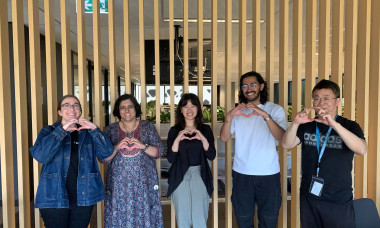6 trends to watch across higher education and VET
The future is supposed to be unknowable. With the tertiary education sector facing a world of shorter skills lifecycles, exploding technology and encroaching automation, education providers are often framed as the victims of a shapeshifting world over which they have little to no control.
Except the trends we need to watch may be right out in front of us.
Almost daily, those in the know about where education is headed are sharing their knowledge loud and clear. It’s true that sometimes we don’t want to listen. But from K-12 through to mid-career learning, there are clear indications of what the future holds, at least for the next 5 years.
Knowing these 6 trends might be all providers need to turn future unknowns into success.
1. Learning first to learning forever
Learning used to come first. Slotting comfortably in between when we finished up at school and when we entered the workforce, higher ed and VET frontloaded the delivery of knowledge and skills that we would need for the rest of our working careers. When we graduated, we were done.
Except we weren’t. Formal learning has now shifted into lifelong proposition. The future we now see is one that squeezes in shorter, bite-sized chunks of learning -either accredited as micro-credentials, or non-accredited – that will be called on as work morphs and requires professional reinvention.
2. Putting money where the skills are
COVID-19 has caused a subtle shift in thinking around education funding. With upskilling and reskilling thrust to centre stage, emergency funding was offered where it aligned to the delivery of skills the economy needed at speed – even if they were non-accredited shorter online courses.
The Government will continue to support skilling with funding where needed. As in the recent $1.2 billion 12-month expansion of the apprentice wage subsidy scheme, it will continue to invest in upskilling and reskilling and infrastructure projects, and may do this in more creative ways.
3. Making internationals feel at home
International education has played a huge role in higher ed and VET in Australia, contributing $37.6 billion to the economy in the 2018-19 financial year. Though Covid-19 forced a sudden shutdown in student inflows, the future will see continued integration with local education market.
This is likely to be a more well-rounded offering. International educators will be seeking new ways to lure students from a more diverse selection of source countries, while enhancing their experience with better work opportunities, more blended learning and more home country partnerships.
4. Rethinking black and white regulation
The NSW Government launched a new Institute of Applied Technology (IAT) in 2021 that promises to be ‘a new model of tertiary education that will fully integrate the theoretical study of university with the practical thinking of vocational education’, including both VET and Bachelor qualifications.
This blurring of the lines will continue. We can expect more pathways and interchangeability across the Australian Qualification Framework (AQF) in the future, along with a continued shift away from more punitive compliance towards market education and self-assurance similar to New Zealand.
5. Daring to digitise education experiences
Education is far from among the most digitised industries in the world. Though it has responsibility for teaching, training and guiding the next generation of our workforce into a world of work dominated by digital, it has not yet itself managed to embrace the full potential of technology.
This is clearly changing – and will continue in the next five years. Expect online and digital delivery of learning to become a requirement rather than a nice-to-have, in ways that will put the student’s needs in education at the centre of the education experience rather than on the backburner.
6. Prioritising employment outcomes
Employers and students want the same thing out of our education system. They want to ensure graduates leave with the knowledge and skills needed to hit the ground running in the workforce, whether that’s the hard skills of their vocation or soft skills that can help them work better.
This pressure will cause job readiness to become a currency for education providers into the future. As they get increasingly adept at linking learning with employment outcomes, including through closer collaboration with industry, education will become an integrated partner.
Find out more about our flagship student management system for higher education and VET, JR Plus.






